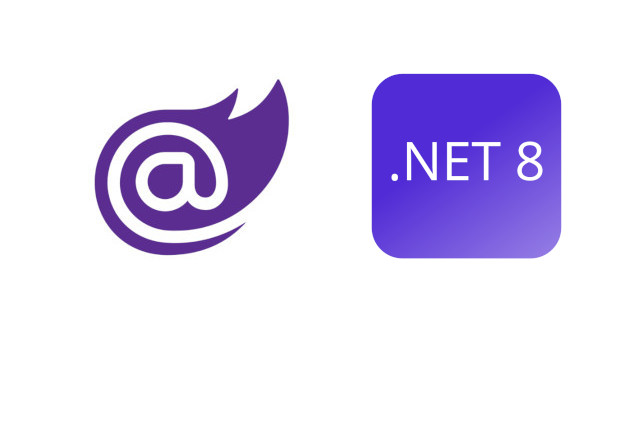Blazor .NET 8 and Minimal APIs Native AOT CRUD

Blazor .NET 8 and Minimal APIs Native AOT CRUD
Let’s briefly discuss the key concepts involved in this Blazor app and Minimal APIs Native AOT CRUD implementation:
Blazor: Blazor is a web framework that allows developers to build interactive web UIs using C# instead of JavaScript. It enables the development of single-page applications (SPAs) with the power of .NET.
Minimal APIs: Minimal APIs is a new feature introduced in .NET 6 that allows developers to create lightweight and minimalistic APIs without the need for traditional controllers and routes. It simplifies the API development process and reduces the amount of boilerplate code.
Native AOT (Ahead-of-Time) Compilation: Native AOT compilation is a feature in .NET that allows the application to be compiled to machine code ahead of time, resulting in faster startup times and improved performance.
CRUD Operations: CRUD stands for Create, Read, Update, and Delete. These are the basic operations performed on data in a database or storage system.
BlazorAppandMinimalAPIsNativeAOTCRUD.Core Class Library
Todo.cs
namespace BlazorAppandMinimalAPIsNativeAOTCRUD.Core.Models;
public class Todo
{
public int Id { get; set; }
public string? Title { get; set; } = string.Empty;
public DateOnly? DueBy { get; set; } = null;
public bool IsComplete { get; set; } = false;
public override string ToString() => $"{this.Id} {this.Title} {this.DueBy} {this.IsComplete}";
}
This file contains the logic for our CRUD operations. It includes methods for creating a new todo item, retrieving all todo items, updating a todo item, and deleting a todo item.
TodoDataModel.cs
namespace BlazorAppandMinimalAPIsNativeAOTCRUD.Core.DataModels;
public record TodoDataModelRecord(int Id = 0, string? Title = "", DateOnly? DueBy = null, bool IsComplete = false);
public class TodoDataModel
{
public int Id { get; set; }
public string? Title { get; set; } = string.Empty;
public DateOnly? DueBy { get; set; } = null;
public bool IsComplete { get; set; } = false;
}
In the TodoDataModel.cs file defines a data model for a todo item in the Blazor app and Minimal APIs Native AOT CRUD project. This file contains the data model for our application. It defines the structure of a todo item, including properties like Id, Title, DueBy, and IsCompleted.
WebAppAPINativeAOT Minimal APIs Native AOT Project
TodoService.cs
using BlazorAppandMinimalAPIsNativeAOTCRUD.Core.Models;
using WebAppAPINativeAOT.Data;
namespace WebAppAPINativeAOT.Services;
public class TodoService(ILogger<TodoService> logger)
{
public Todo? GetById(int id)
{
logger.LogInformation("Called GetById: {id}", id);
return SampleData.ToDos.FirstOrDefault(x => x.Id == id);
}
public Todo[]? GetCompleted()
{
logger.LogInformation("Called GetCompleted");
return SampleData.ToDos.Where(x => x.IsComplete == true).ToArray();
}
public Todo[]? GetAll()
{
logger.LogInformation("Called GetAll");
return [.. SampleData.ToDos];
}
public bool Add(Todo todo)
{
logger.LogInformation("Called Add {todo}", todo);
try
{
var last = SampleData.ToDos.LastOrDefault();
todo.Id = last is not null ? last.Id + 1 : 1;
SampleData.ToDos.Add(todo);
}
catch (Exception ex)
{
logger.LogError(ex, "Called Add Error {todo}", todo);
return false;
}
return true;
}
public bool Update(int id, Todo todo)
{
logger.LogInformation("Called Update {todo}", todo);
try
{
var oTodo = SampleData.ToDos.FirstOrDefault(x => x.Id == id);
if (oTodo == null) return false;
oTodo.Title = todo.Title;
oTodo.DueBy = todo.DueBy;
oTodo.IsComplete = todo.IsComplete;
}
catch (Exception ex)
{
logger.LogError(ex, "Called Update Error {todo}", todo);
return false;
}
return true;
}
public bool DeleteById(int id)
{
logger.LogInformation("Called DeleteById {id}", id);
var oTodo = SampleData.ToDos.FirstOrDefault(x => x.Id == id);
if (oTodo == null)
return false;
SampleData.ToDos.Remove(oTodo);
return true;
}
}
The TodoService.cs file contains a class named TodoService that implements various methods for CRUD operations on the Todo model. Let’s take a closer look at each method:
GetById(int id): This method retrieves a Todo object by its ID. It logs the ID of the requested Todo and returns the corresponding Todo object if found.
GetCompleted(): This method retrieves an array of completed Todo objects. It logs the request and returns an array of Todo objects where the IsComplete property is set to true.
GetAll(): This method retrieves an array of all Todo objects. It logs the request and returns an array containing all the Todo objects.
Add(Todo todo): This method adds a new Todo object to the collection. It logs the request and attempts to add the Todo object to the SampleData.ToDos collection. If successful, it assigns a unique ID to the Todo object and adds it to the collection. If an error occurs, it logs the error and returns false.
Update(int id, Todo todo): This method updates an existing Todo object with the provided ID. It logs the request and attempts to find the Todo object with the specified ID. If found, it updates the Title, DueBy, and IsComplete properties of the Todo object. If an error occurs, it logs the error and returns false.
DeleteById(int id): This method deletes a Todo object with the specified ID. It logs the request and attempts to find the Todo object with the specified ID. If found, it removes the Todo object from the SampleData.ToDos collection. If an error occurs, it returns false.
Program.cs
using BlazorAppandMinimalAPIsNativeAOTCRUD.Core.DataModels;
using BlazorAppandMinimalAPIsNativeAOTCRUD.Core.Models;
using System.Text.Json.Serialization;
using WebAppAPINativeAOT.Data;
using WebAppAPINativeAOT.Services;
internal class Program
{
private static void Main(string[] args)
{
var builder = WebApplication.CreateSlimBuilder(args);
builder.Services.ConfigureHttpJsonOptions(options =>
{
options.SerializerOptions.TypeInfoResolverChain.Insert(0, AppJsonSerializerContext.Default);
});
// add test data
SampleData.AddTestData();
// Add services to the container.
builder.Services.AddScoped<TodoService>();
var app = builder.Build();
// add endpoints
app.MapTodoGroup();
app.Run();
}
}
[JsonSerializable(typeof(object))]
[JsonSerializable(typeof(Todo[]))]
[JsonSerializable(typeof(TodoDataModel[]))]
internal partial class AppJsonSerializerContext : JsonSerializerContext
{
}
public static class WebApplicationExtensions
{
public static void MapTodoGroup(this WebApplication app)
{
var todosApi = app.MapGroup("/todos");
// get all
todosApi.MapGet("/", (TodoService todoService) => todoService.GetAll());
// get all completed
todosApi.MapGet("/complete", (TodoService todoService) => todoService.GetCompleted());
// get by id
todosApi.MapGet("/{id}", (int id, TodoService todoService) =>
todoService.GetById(id) is { } todo
? Results.Ok(todo)
: Results.NotFound());
// add
todosApi.MapPost("/", (Todo todo, TodoService todoService) =>
{
todoService.Add(todo);
return Results.Created($"/{todo.Id}", todo);
});
// update
todosApi.MapPut("/{id}", (int id, Todo inputTodo, TodoService todoService) =>
{
var todo = todoService.GetById(id);
if (todo is null) return Results.NotFound();
todoService.Update(id, inputTodo);
return Results.NoContent();
});
// delete
todosApi.MapDelete("/{id}", (int id, TodoService todoService) =>
{
if (todoService.GetById(id) is Todo todo)
{
todoService.DeleteById(id);
return Results.NoContent();
}
return Results.NotFound();
});
}
}
The code is structured into two main sections: the Program and the WebApplicationExtensions.
The Program.cs file contains the entry point of the application and is responsible for configuring the Blazor app and defining the main logic.
- The
Mainmethod is the entry point of the application. It creates aWebApplication builderusing theWebApplication.CreateSlimBuildermethod. - The
ConfigureHttpJsonOptionsmethod is used to configure theJSONserialization options for theHTTP requests and responses. In this code, it inserts a customTypeInfoResolverChainat the beginning of thedefaultoptions. - The
SampleData.AddTestData()method is called to add sometest datato theTodolist. - The
TodoServiceis registered as a scoped service in the dependency injection container. - The
app.MapTodoGroup()method is called to define theendpointsfor the Todo API. - Finally, the
app.Run()method is called to start the application.
The WebApplicationExtensions contains extension methods for the WebApplication class, which are used to define the endpoints for the Todo API.
- The
todosApivariable is created by calling theapp.MapGroupmethod with the"/todos"route. - The
todosApi.MapGetmethod is used to define aGETendpoint for retrieving all theTodoitems. - The
todosApi.MapGetmethod is used to define aGETendpoint for retrieving all the completedTodoitems. - The
todosApi.MapGetmethod is used to define aGETendpoint for retrieving aTodoitem by itsID. - The
todosApi.MapPostmethod is used to define aPOSTendpoint for adding a newTodoitem. - The
todosApi.MapPutmethod is used to define aPUTendpoint for updating aTodoitem. - The
todosApi.MapDeletemethod is used to define aDELETEendpoint for deleting aTodoitem.
BlazorApp Presentation Project
TodoClientService.cs
using BlazorAppandMinimalAPIsNativeAOTCRUD.Core.DataModels;
using System.Text.Json;
namespace BlazorApp.Services;
public class TodoClientService(IHttpClientFactory httpClientFactory)
{
public async Task<TodoDataModelRecord?> GetById(int id)
{
using var httpClient = httpClientFactory.CreateClient("TodoApi");
var httpResponseMessage = await httpClient.GetAsync($"todos/{id}");
if (httpResponseMessage.IsSuccessStatusCode)
{
using var contentStream = await httpResponseMessage.Content.ReadAsStreamAsync();
return await JsonSerializer.DeserializeAsync<TodoDataModelRecord?>(contentStream, Program.TodoApiJsonOptions);
}
return null;
}
public async Task<TodoDataModelRecord[]?> GetCompletedAsync()
{
using var httpClient = httpClientFactory.CreateClient("TodoApi");
var httpResponseMessage = await httpClient.GetAsync("todos/complete");
if (httpResponseMessage.IsSuccessStatusCode)
{
using var contentStream = await httpResponseMessage.Content.ReadAsStreamAsync();
return await JsonSerializer.DeserializeAsync<TodoDataModelRecord[]>(contentStream, Program.TodoApiJsonOptions);
}
return [];
}
public async Task<TodoDataModelRecord[]?> GetAllAsync()
{
using var httpClient = httpClientFactory.CreateClient("TodoApi");
var httpResponseMessage = await httpClient.GetAsync("todos");
if (httpResponseMessage.IsSuccessStatusCode)
{
using var contentStream = await httpResponseMessage.Content.ReadAsStreamAsync();
return await JsonSerializer.DeserializeAsync<TodoDataModelRecord[]>(contentStream, Program.TodoApiJsonOptions);
}
return [];
}
public async Task<bool> AddAsync(TodoDataModel todo)
{
using var httpClient = httpClientFactory.CreateClient("TodoApi");
var httpResponseMessage = await httpClient.PostAsJsonAsync("todos", todo, Program.TodoApiJsonOptions, default);
if (httpResponseMessage.IsSuccessStatusCode)
{
return true;
}
return false;
}
public async Task<bool> UpdateAsync(int id, TodoDataModel todo)
{
using var httpClient = httpClientFactory.CreateClient("TodoApi");
var httpResponseMessage = await httpClient.PutAsJsonAsync($"todos/{id}", todo, Program.TodoApiJsonOptions, default);
if (httpResponseMessage.IsSuccessStatusCode)
{
return true;
}
return false;
}
public async Task<bool> DeleteByIdAsync(int id)
{
using var httpClient = httpClientFactory.CreateClient("TodoApi");
var httpResponseMessage = await httpClient.DeleteAsync($"todos/{id}");
if (httpResponseMessage.IsSuccessStatusCode)
{
return true;
}
return false;
}
}
The TodoClientService class is a service in a Blazor app that interacts with a Todo API to perform CRUD (Create, Read, Update, Delete) operations on TodoDataModel records. It uses the HttpClientFactory to create an instance of HttpClient and makes HTTP requests to the Todo API endpoints.
Program.cs
using BlazorApp.Components;
using BlazorApp.Services;
using System.Text.Json;
internal class Program
{
public const string API_URL = "http://localhost:5000";
public static readonly JsonSerializerOptions TodoApiJsonOptions = new() { PropertyNamingPolicy = JsonNamingPolicy.CamelCase };
private static void Main(string[] args)
{
...
builder.Services.AddHttpClient("TodoApi", httpClient =>
{
httpClient.BaseAddress = new Uri(API_URL);
});
// Add services to the container.
builder.Services.AddScoped<TodoClientService>();
builder.Services.AddRazorComponents()
.AddInteractiveServerComponents();
...
}
}
The Program.cs file, which is responsible for configuring and running the Blazor app. Let’s break down the code structure and understand its components:
HttpClient Configuration: This code configures an HttpClient named "TodoApi" and sets its base address to the API_URL constant.
Service Registration: This code registers the TodoClientService as a scoped service. The TodoClientService is responsible for interacting with the Todo API.
Source
Full source code is available at this repository in GitHub:
https://github.com/akifmt/DotNetCoding/tree/main/src/BlazorAppandMinimalAPIsNativeAOTCRUD
